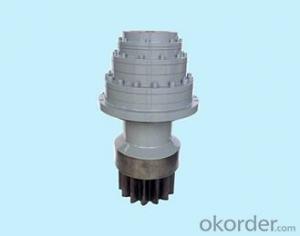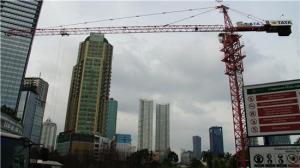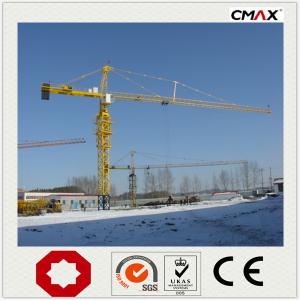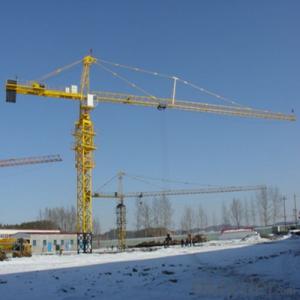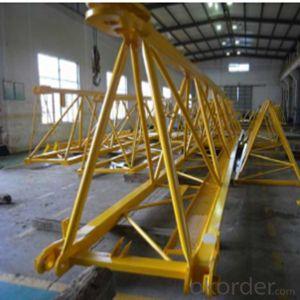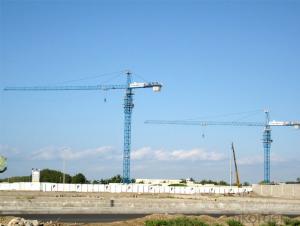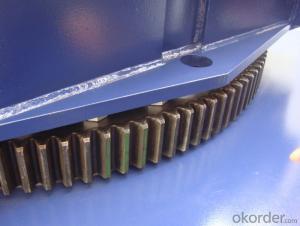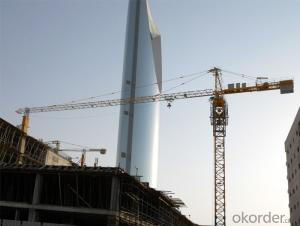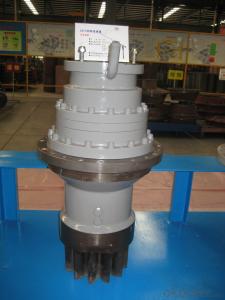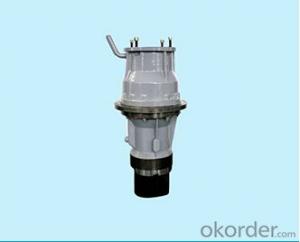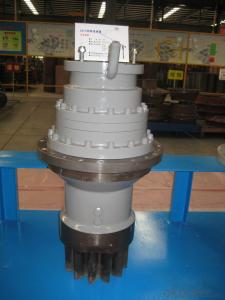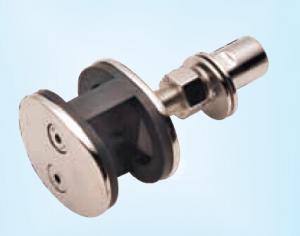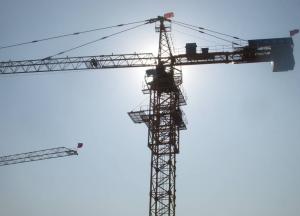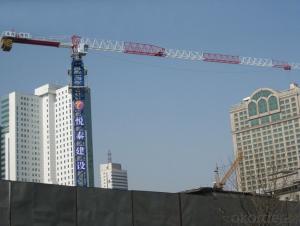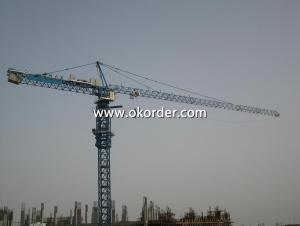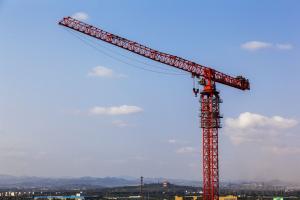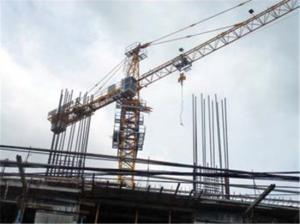Slewing reducer JH15
- Loading Port:
- China Main Port
- Payment Terms:
- TT OR LC
- Min Order Qty:
- -
- Supply Capability:
- -
OKorder Service Pledge
OKorder Financial Service
You Might Also Like
Introduction
JH series slewing reducer is a hardened face planetary gear reduction device designed by our company according to the advanced foreign technologies with all gears adopting grinding process.The reducer has features of compact structure, stable operation, high transmition efficiency, low noise, long service life, high reliability, etc.Such series reducer can be equipped with torque motor, variable frequency motor and corresponding electrical control system to constitute RCV series slewing mechansim and JHF series slewing mechanism.
Specification
Model:JH15
Ratio:160
Rated output torque (N.M):24000
Output gear Parameter (Customization is avaible):m=18,z=14,x=+0.5
Weight(Kg):410
Parameters of JHF series matching variable frequency motors--Rated power of the motor kw:11,15
Recommended Tower cranes t.m:450~900

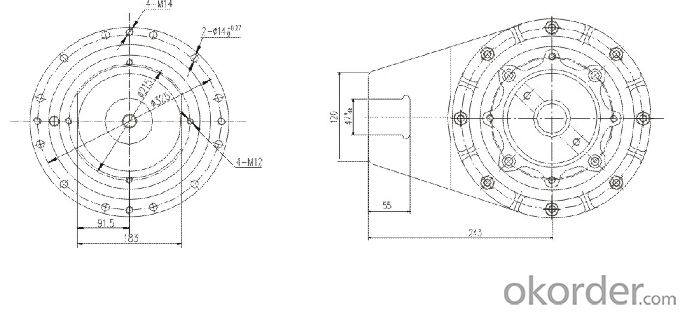
- Q: we using EOT crane my company
- Your okorder /... contact them with your enquiry. You must include Model and anticipated loads as that determines torque applied. Seed is operator dependent for safe operation.
- Q: what are the number meanings for paper cranes?
- Hey Mary, Don't let the web site name fool you, it does discuss the deeper meaning behind paper cranes. Steeped in ancient myths and carrying resonant cultural meanings, the crane occupies a central role in the Asian imagination. Anyone who has witnessed cranes flying through the early morning mist over shimmering green rice paddies will readily understand how the mysterious beauty of the crane has captivated Asian life and art for centuries. Like the dragon, tiger, and phoenix, the crane ranks among the favorite motifs for Asian artwork because of its rich meaning and history. Read more at the web sites.
- Q: When the earthquake happened, the children wanted to know what they could do to inform other students and raise awareness for the people in Japan. So, we decided to do a show on the earthquake, and to also making the cranes, the origami cranes.thank you! a foreigner. (detail)
- To also make the cranes is the correct way to say it. To also making the cranes is incorrect.
- Q: Ever since a few weeks ago, these retarded giant mosquitos thingys keep on flying into my house from somewhere and they always come into my office and bother me, so im wondering what month they come and what month they leave?
- Crane flies tend to live in wooded areas and open fields, but they can live nearly anywhere, including snowy northern climates and desert lands. In order for their eggs to hatch and larvae to grow into adults, they require either water or damp, decaying material in which to lay their eggs, depending on the species. Crane fly larvae and pupae can be found in damp sod or compost piles, or under the decomposing leaves on the banks of rivers, streams, ponds or lakes. Crane fly larvae and pupae feed on decomposing material, grass and the roots of many plants. This makes them a beneficial insect, as they assist in the cycle of decomposition. Once they emerge in late winter or early spring as adults, after maturing over the winter, their primary purpose is to mate and lay eggs.
- Q: my friend is in the hospital with really bad burns
- Vince M is right; My class decided to make 1,000 paper cranes. We are punching holes in the middles of the cranes and stringing them on yarn. Perhaps u should do that and give the seperate ones to the hospital. Sugest that they hang them from the ceiling......?
- Q: I have a 2 year old bearded dragon, and there r tons of crane flies flying around everywhere outside. i was wondering if she can eat them in small amounts?
- Separate your dragons and your issue would be solved. they do no longer look to be meant to stay jointly till they are mating, that's lots too early for a 4 month previous dragon, they dont attain sexual adulthood till finally around a million 365 days.
- Q: He looked so out of his comfort zone at UFC 140. No support from either Silva or Seagal. Which brings me to another question. Why weren't those 2 by his side? Seagal or Silva are always at his side.Jones' height shouldn't be an issue. He should've at least tried to use it.
- On the whole fight, Machida try to use the front kick (not crane kick) to the head against Jon Jones during first round, but due to reach differences, he is not able to hit him, and Jon Jones are keeping distance against Machida, because when Lyoto try to hit him, Jones simply slide back to avoid the strike. But, on all the bouts of Jon Jones, the only time I have seen him struggling against his opponent, is during the first round that he feel nervous, especially when Machida counter him by left punch while pushing him or kicking in the leg. Jones is lucky enough to hit Lyoto unexpectedly and choke him via technical guillotine, because if not, then I am expecting that Lyoto will win via decision. I am expecting that Lyoto Machida will go back in the octagon to fight somebody before arranging the rematch against Jon Jones. ......................................
- Q: What kinds of concrete are there in construction crane? Mainly for the construction of this area ~ ~ ~!There is no lifting machinery issued by the state what ~ ~ which detailed description of the construction machinery lifting what?
- The most common are tower cranes, elevators, and freight lifts. The big construction enterprise also has the track type tower crane
- Q: Where i live i get a damn lot of these come in my house.... I usually just leave them unless there are too many. This was before i was told that they are in fact one of the most venomous creatures on the planet. I laughed, but then was told the same by a friend.Im now Little worried about them coming near me. I understand they have no ability to sting but still... Should i worry about them flying around my house? I was thinking if i were to squash one, doesn't that mean the venom is now on my hand?!Are they really the most venomous creatures on earth? Or am i making a mountain out of a molehill? Thanks
- Crane flies are an insect that looks like a large mosquito. They cannot bite you. They have no venom. Some people call them Daddy Long Legs. Daddy Long Legs is also a name used for several spiders, and harvestmen, none of which have a harmful to humans venom.
- Q: Where are levers used in and throughout the crane
- No, i wouldn't say so, but they are used to control the boom.
Send your message to us
Slewing reducer JH15
- Loading Port:
- China Main Port
- Payment Terms:
- TT OR LC
- Min Order Qty:
- -
- Supply Capability:
- -
OKorder Service Pledge
OKorder Financial Service
Similar products
Hot products
Hot Searches
Related keywords
